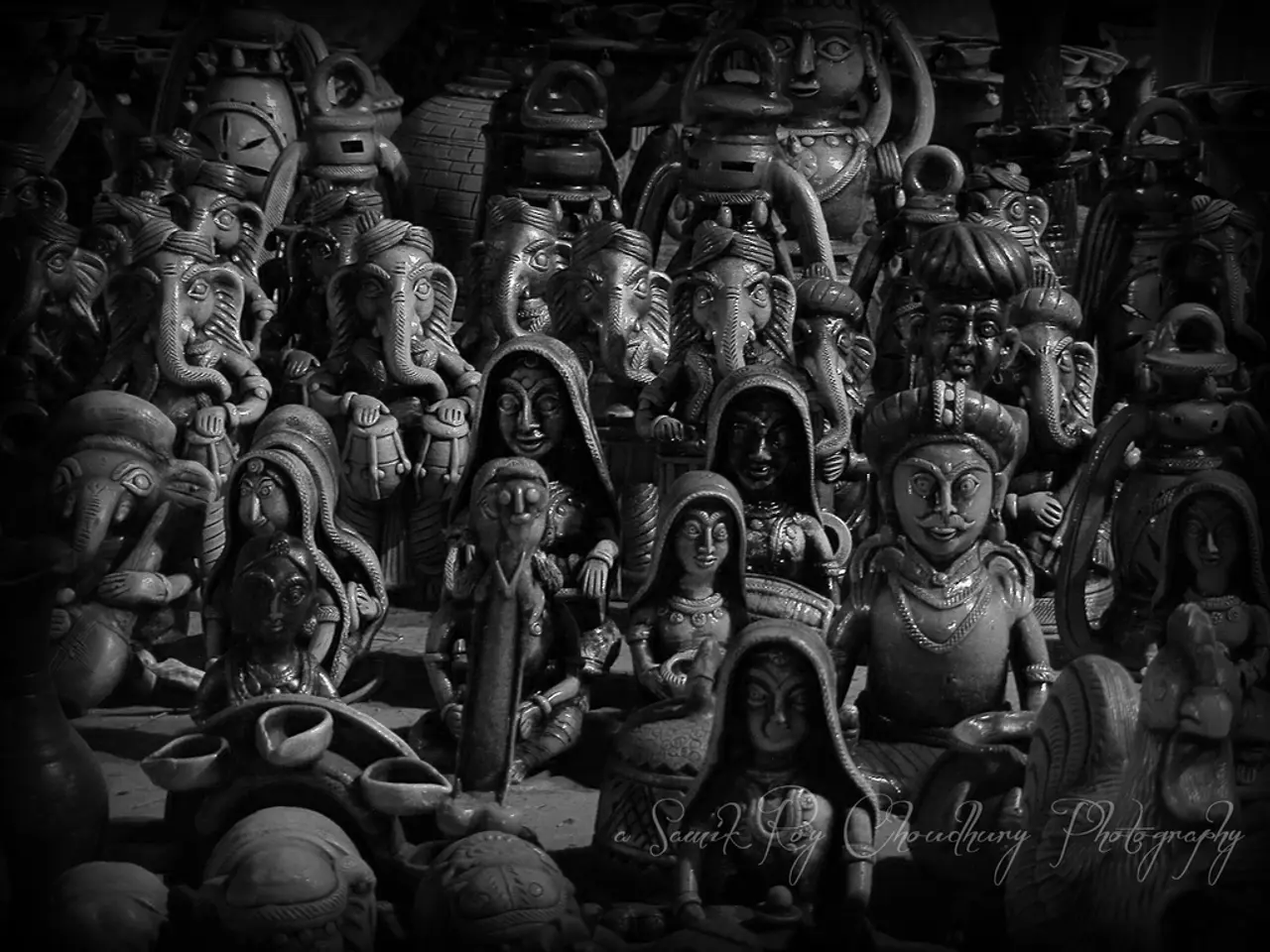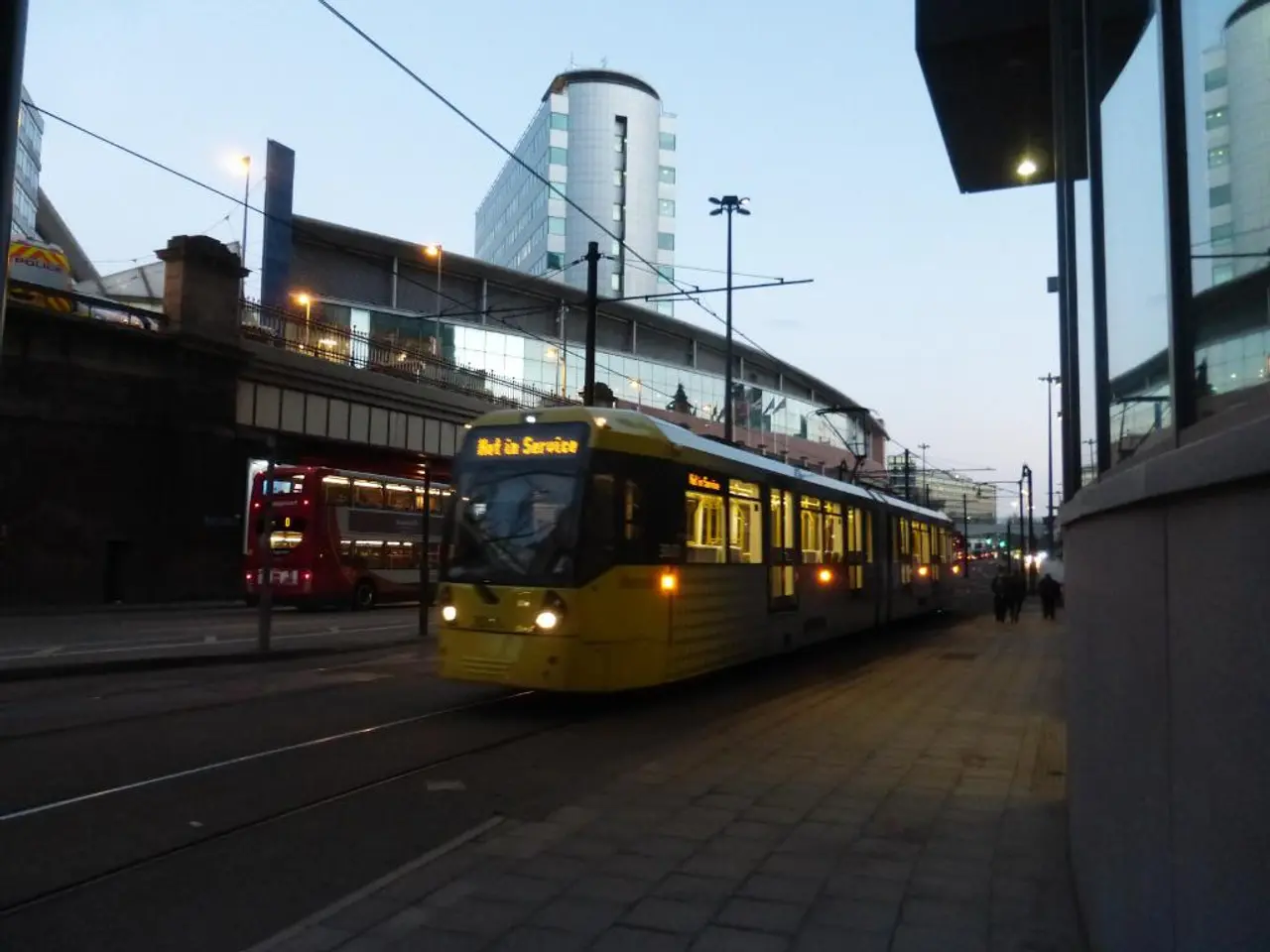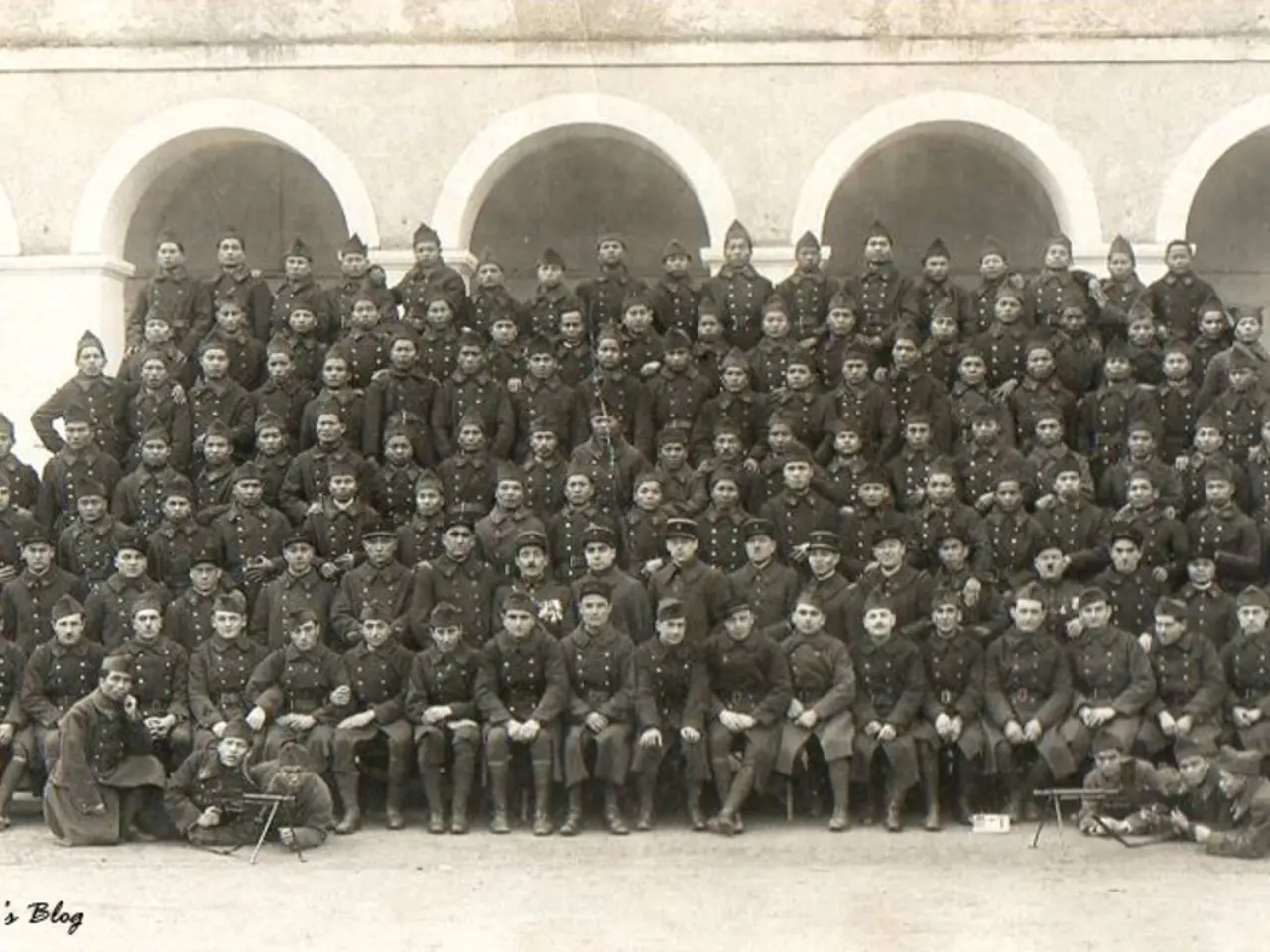Mass Disaster at Mansa Devi Temple in Haridwar: Six Fatalities, Numerous Injuries Result from Stampedes amidst Shravan Pilgrim Rush
In a heartbreaking incident that occurred on July 27, 2025, a stampede at the Mansa Devi Temple in Haridwar, India, resulted in the loss of six lives and left over 20 others injured. The tragedy, which took place at 8:30 am on Bilwa Parvat, has sparked a wave of concern and calls for improved safety measures at religious sites across the country.
The stampede was exacerbated by severe overcrowding and the absence of an effective crowd management plan. Eyewitnesses noted the lack of smooth entry and exit demarcations, inadequate police deployment, and the absence of crowd marshals. The incident has reignited debate around crowd safety and infrastructure at India's religious sites.
In response to the tragedy, the Uttarakhand government has taken several immediate steps to address the situation. Chief Minister Pushkar Singh Dhami announced compensation for the families of the deceased and injured, and ordered a high-level probe into the incident. The temple trust president, Mahant Ravindra Puri, also announced compensation for the victims' families and injured devotees.
To enhance on-site emergency response capabilities, the government has deployed additional police forces, the State Disaster Response Force, and fire teams at the temple. These measures aim to prevent similar mishaps in the future.
The magisterial inquiry ordered by Chief Minister Dhami will investigate the causes and failures leading to the stampede, indicating a commitment to thorough review and accountability. Enhanced forensic and police investigations are underway to understand the triggering factors, including the panic caused by rumors such as electric current hazard and crowd mismanagement.
While specific new infrastructure or procedural crowd control measures have not been explicitly detailed yet, the inquiry and increased disaster and police force presence strongly imply forthcoming recommendations or implementations for improved crowd safety protocols, better management of access routes such as stairs and ropeways, and clearer communication systems to prevent rumor-induced panic.
Given the recurring nature of pilgrim crowds at Mansa Devi Temple, authorities are expected to consider structural modifications like regulated entry, improved signage, crowd flow management, and real-time monitoring systems as part of the safety improvements.
The tragedy at Mansa Devi Temple has sparked questions over crowd control and safety preparedness at the site. Critics have harshly criticized the administration for not restricting entry at key pressure points, such as the ropeway base and temple approach route. Urban planning experts have called for comprehensive crowd simulation modelling, enhanced surveillance systems, and digital queueing solutions for future influxes.
The upcoming weeks will be crucial in determining accountability and establishing stronger safeguards for India's religious tourism sector. The temple receives tens of thousands of visitors annually during the Hindu month of Shravan, making it essential to ensure the safety and well-being of all pilgrims.
In conclusion, immediate steps have been taken to investigate the causes of the tragedy, provide support to the victims, and reinforce emergency response capabilities. Further safety enhancements are expected to follow based on the magisterial inquiry outcomes, aimed at preventing such incidents in the future and ensuring the safety of all visitors to Mansa Devi Temple.
- The tragedy at Mansa Devi Temple has raised concerns about migration patterns of pilgrims and the need for improved crowd management policies.
- War-and-conflicts in certain regions force people to migrate, leading to overcrowding in religious sites and increased need for displacement and resettlement policies.
- Policy-and-legislation regarding safety measures at religious sites require immediate attention, considering recent incidents such as the Mansa Devi Temple stampede.
- Accidents, like car-accidents, fires, and stampedes, demand stricter sanctions and penalties within the crime-and-justice system to deter negligence.
- General-news outlets have reported on the Mansa Devi Temple incident, emphasizing the need for improved safety protocols in popular tourist destinations.
- The ongoing disaster at the Mansa Devi Temple highlights the importance of implementing safety measures in various fields, including sports stadiums and venues.
- In sports, accidents and tragedies can occur, such as football players getting injured, Champions League matches being halted due to fan unrest, or NBA players involved in criminal justice cases.
- European-leagues, NFL, soccer leagues, WNBA, baseball leagues, hockey, golf, and sports-betting platforms need to assess their safety protocols in light of the Mansa Devi Temple incident.
- The tragedy at Mansa Devi Temple has resonated in various sports domains, causing a ripple effect in reevaluating safety measures in sports events such as racing, premier-league games, American football, NBA matches, Masters tournaments, Grand Prix, horse-racing, Serie A, Laliga, NCA-football, tennis, and mixed-martial-arts.
- Sports analysis has emerged as a critical tool in understanding the factors contributing to disasters like the one at Mansa Devi Temple and suggesting preventive measures in sports and other settings.
- Involvement of auto-racing, premier-league football, American football, NBA, Masters, Grand Prix, horse-racing, and mixed martial arts in sports-betting may require additional safety measures to mitigate risks for players and betters.
- Emergency response capabilities play a crucial role not only during wars-and-conflicts but also in sports, where accidents can happen suddenly, like football players collapsing during games or racing cars crashing.
- Effective safety measures at religious sites can prevent incidents like the Mansa Devi Temple stampede and contribute to the overall success of religious, sports, or political events.
- The political implications of the Mansa Devi Temple tragedy extend beyond India, as governance and policy-and-legislation pertaining to crowd safety and infrastructure become a hot topic in domestic and international political discourse.
- The World Cup of Sports, a major event hosting various international sports leagues, requires stringent safety measures to ensure the well-being of athletes, fans, and spectators.
- In education, the NCAA-basketball, American-football, and MLB leagues prioritize safety measures in their practices and games, with professional teams serving as role models for youth sports.
- The NHL, often cited for its strict safety protocols in ice hockey, may serve as a model for other sports leagues and religious sites in implementing robust crowd management systems.
- The tragic incident at the Mansa Devi Temple highlights the need for the cooperation of various stakeholders, including government bodies, religious leaders, and public safety agencies, in ensuring the safety of all.
- The future of religious tourism in India and beyond depends on the ability of authorities to learn from incidents like the Mansa Devi Temple stampede and implement effective policy changes to prevent similar tragedies.






